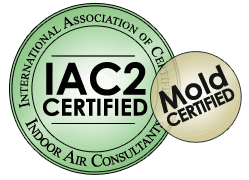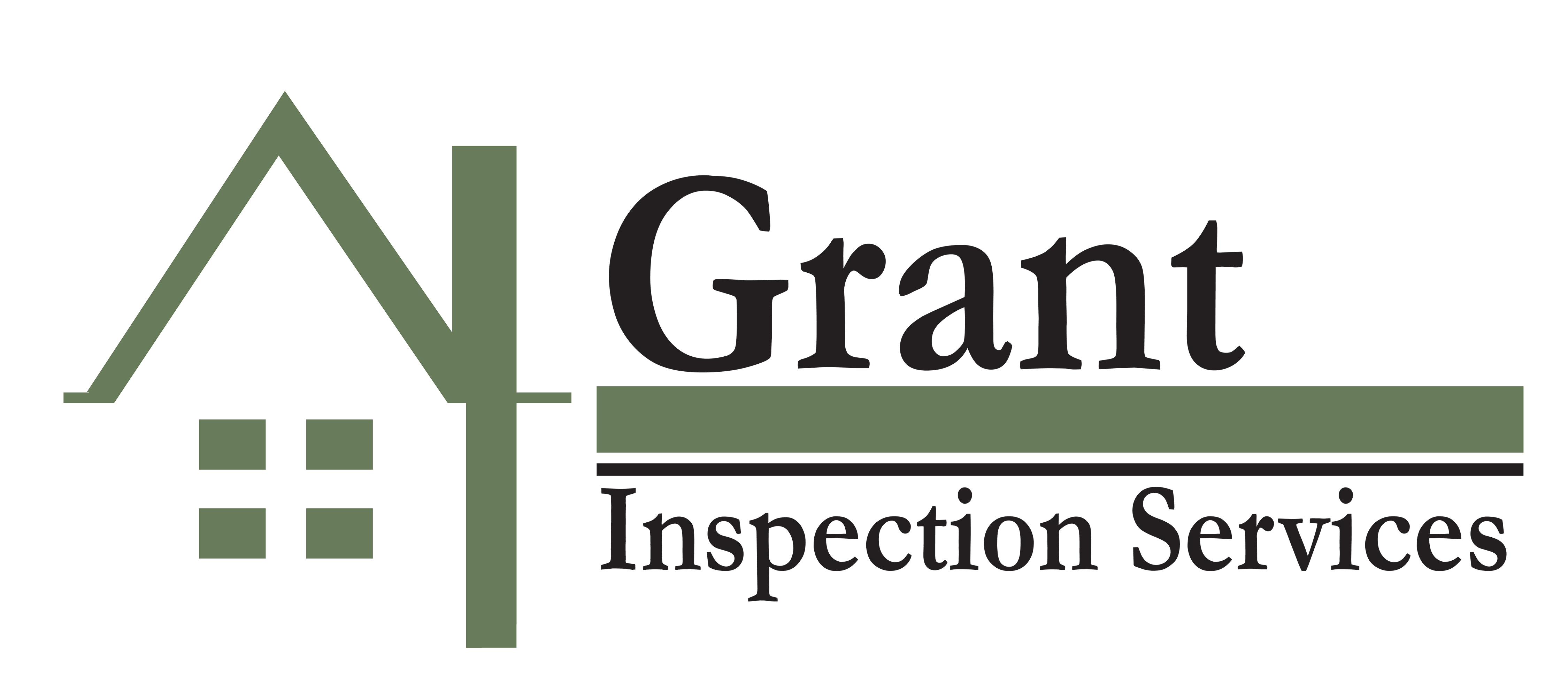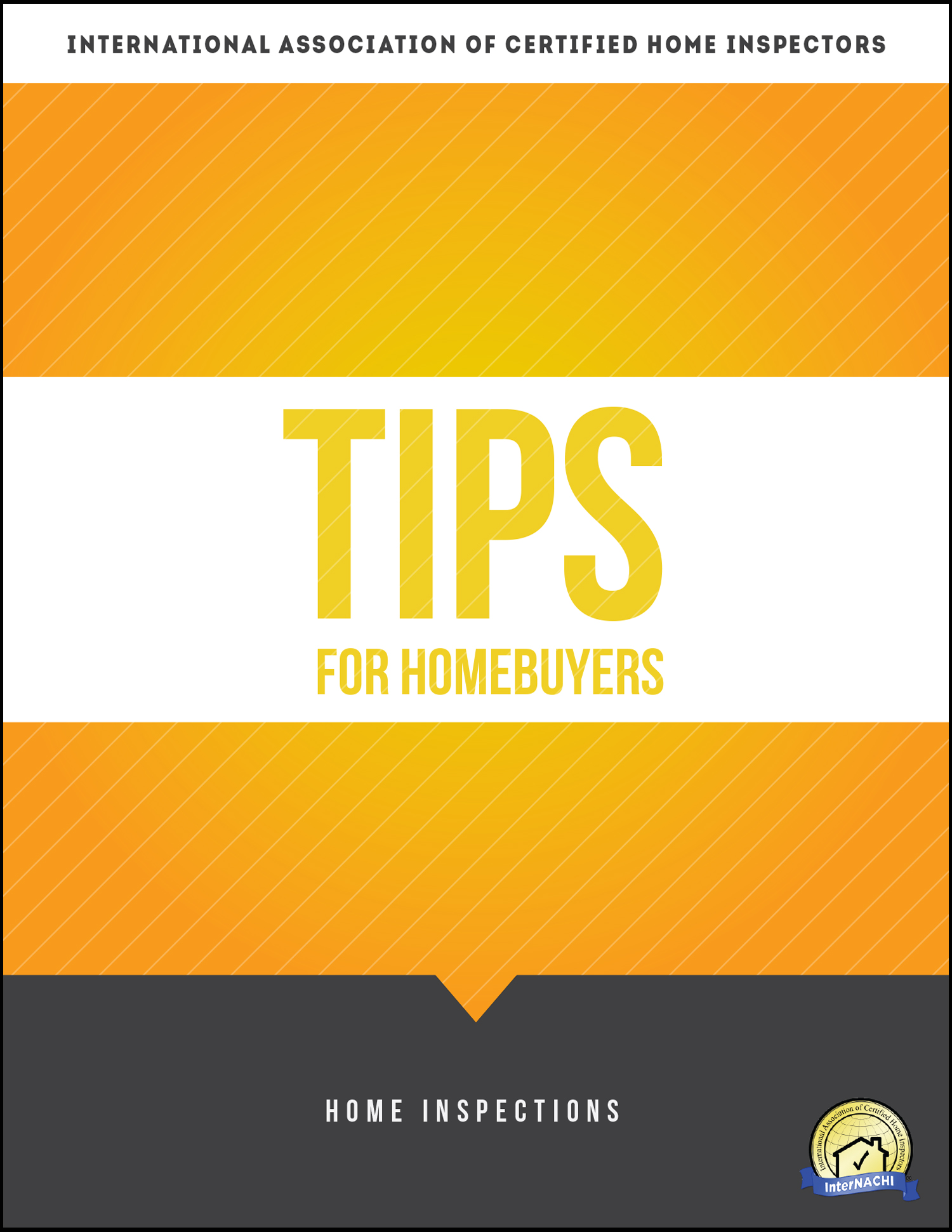Grant Inspection Services recommends a detailed mold or air quality assessment be performed first. Our program offers you detailed information and an action plan so you don’t waste your time and money! We use a direct approach to assess your mold or air quality concerns:
- Detailed mold / air quality assessment / inspection.
- Test only when it makes sense.
- Provide detailed and understandable laboratory data and inspection results.
- Help you form a realistic action plan to solve problems.
- Clearance testing and inspection to confirm the issue was corrected properly.
- Accurate, detailed inspection and the ability to understand test data is critical.
• The report may recommend that the Assessor be called back for Post Remediation Assessment and air sampling (typically on large projects)
Moisture Evaluations
Our inspectors perform a visual site evaluation of the areas you suspect of mold or moisture. Using a moisture meters and infrared cameras, the inspector can help identify active leaks or areas with the potential for water intrusion. We will provide recommendations on how to correct these high risk areas and help you decide if mold samples would be beneficial at this time.
Air Quality Testing
When it comes to your home, few things are more serious health-wise than mold and unhealthy air. We here at Grant Inspection Services provide high quality and accurate indoor air quality testing services. Since mold and other issues can grow in a variety of places, and in unseen areas, we use moisture meters and infrared cameras to map out trouble areas, and to make sure we find both air quality issues, and conditions that can lead to air quality issues. All of this can be added on to our standard home inspection services. Our comprehensive reports afterward help you to manage and remediate issues, as well as to plan for the future. So if you need a mold or indoor air quality test, contact us today and we will be happy to help.
Excerpts taken from EPA.gov
Indoor Air Quality (IAQ) refers to the air quality within and around buildings and structures, especially as it relates to the health and comfort of building occupants. Understanding and controlling common pollutants indoors can help reduce your risk of indoor health concerns.
The Benefits of our Air Quality Services Air testing can be pricey but Grant Inspection Services has packages available to reduce the cost substantially when bundled with other residential or commercial services. We know what to look for when testing the air quality and only recommend mold sampling services when they are needed. If you (or our inspector) suspect there is a chance the house or property might have air quality, we would strongly recommend having an Indoor Air Quality Inspection performed to confirm or rule out the presence of elevated and or toxic levels of mold. Since the 2004 hurricane season, we have seen an increase of Mold in homes. Many roofs were damaged allowing heavy rains to penetrate the homes and allowing mold to grow. Grant Inspection Services will perform an (IAQ) Indoor Air Quality test after visually inspecting the interior of the property for visible mold. The inspector will collect air samples from inside and outside the house, allowing for a comparison. The inspector will recommend using Z-5 Canisters to collect the air samples depending on the total square footage and layout of the property, documenting on a chain of custody form times and areas where samples were collected. After all samples are collected and documented, the inspector will FedEx the Z-5 Canisters to our Lab partner, Pro-Lab for analysis. All samples are sent to Pro-Lab to determine the type(s) and levels of mold present at time of the inspection. Pro-Lab will email the results to you (the buyer) and to Grant Inspection Services within 2 business days of sample arrival. If you have any questions, please feel free to call us at 352-406-9415. For technical or scientific questions that require a detailed explanation regarding the air sample results, please call Pro-Lab at 800-427-0550
Immediate Effects Some health effects may show up shortly after a single exposure or repeated exposures to a pollutant. These include irritation of the eyes, nose, and throat, headaches, dizziness, and fatigue. Such immediate effects are usually short-term and treatable. Sometimes the treatment is simply eliminating the person’s exposure to the source of the pollution, if it can be identified. Soon after exposure to some indoor air pollutants, symptoms of some diseases such as asthma may show up, be aggravated or worsened. The likelihood of immediate reactions to indoor air pollutants depends on several factors including age and preexisting medical conditions. In some cases, whether a person reacts to a pollutant depends on individual sensitivity, which varies tremendously from person to person. Some people can become sensitized to biological or chemical pollutants after repeated or high level exposures. Certain immediate effects are similar to those from colds or other viral diseases, so it is often difficult to determine if the symptoms are a result of exposure to indoor air pollution. For this reason, it is important to pay attention to the time and place symptoms occur. If the symptoms fade or go away when a person is away from the area, for example, an effort should be made to identify indoor air sources that may be possible causes. Some effects may be made worse by an inadequate supply of outdoor air coming indoors or from the heating, cooling or humidity conditions prevalent indoors.
Long-Term Effects Other health effects may show up either years after exposure has occurred or only after long or repeated periods of exposure. These effects, which include some respiratory diseases, heart disease and cancer, can be severely debilitating or fatal. It is prudent to try to improve the indoor air quality in your home even if symptoms are not noticeable. While pollutants commonly found in indoor air can cause many harmful effects, there is considerable uncertainty about what concentrations or periods of exposure are necessary to produce specific health problems. People also react very differently to exposure to indoor air pollutants. Further research is needed to better understand which health effects occur after exposure to the average pollutant concentrations found in homes and which occurs from the higher concentrations that occur for short periods of time.
Mold Explained Introduction: The fungi are a large group of organisms that include mold. In nature, the fungi and mold help breakdown and recycle nutrients in the environment. Molds are the most common type of fungi that grow indoors. Mold are microscopic organisms that live on plants, in the soil, and on animals, in fact almost anywhere food and moisture are available. Mold is everywhere present in the outdoor and normal indoor environments. It is in the air and on surfaces as settled dust. Exposure to mold is inevitable in everyday life. Thus, exposure to mold is considered part of a normal activity for most people. Only environments for which extraordinary preparations have been taken don’t have mold present in the air or on surfaces.
Understanding Mold Under the right conditions (moisture, organic food, and time) mold will grow, multiply and produce spores. Mold grows throughout the natural as well as the built environment. Mold reproduce by microscopic cells called “spores” that are spread easily through the air. Mold spores are present through the indoor and outdoor air continually.
There are molds that can grow on wood, paper, carpet, food, ceiling tiles, dried fish, carpet, or any surface where dust has accumulated. When excessive moisture or water accumulates indoors, mold growth will often occur, particularly if the moisture problem remains undiscovered or un-addressed. There is no practical way to eliminate all mold and their spores in the indoor environment. The way to control indoor mold growth is to control the amount of moisture available to the mold. Mold growth can become a problem in your home or office where there is sufficient moisture and the right foodstuff is available. The key to preventing mold growth is to prevent all moisture problems. Of course, hidden mold can grow when there is water available behind walls, sinks, floors, etc. Indications of hidden moisture problems are discoloration of ceiling or walls, warped floors or condensation on the windows or walls. Controlling Moisture The most critical step in solving a mold problem is to accurately identify and fix the source(s) of moisture that allowed the growth to occur. In order to prevent mold from growing, it is important that water damaged areas be dried within a 24-48 period.
If mold is a problem in the home, the mold must be cleaned up with a mild detergent and the excess water or moisture removed. It is not necessary to try and kill the mold or its spores. There are many common sources of excess moisture that can contribute to indoor mold growth. Some of the primary means of moisture entry into homes and buildings are water leakage (such as roof or plumbing leaks), vapor migration, capillary movement, air infiltration, humidifier use, and inadequate venting of kitchen and bath humidity. The key to controlling moisture is to generally reduce indoor humidity within 35% – 60% (depending what climate you live in) and fix all leaks whatever their cause.
Mold Growth Sources: If the source of moisture is not easily detected or you have a hidden water leak, mold testing can be helpful. Often a roof leak or a plumbing leak can be identified as the source. The difficulty arises when there is an odor present or when an occupant shows signs of mold exposure but no visible mold can be seen. Excess water intrusion can also lead to dry rot of lumber and cause a serious structural defect in buildings. Health Related Risks Based on the Institute of Medicine and the National Academy of Sciences, dampness and mold in homes is associated with increases in several adverse health effects including cough, upper respiratory symptoms, wheeze, and exacerbation of asthma.
Mold and fungi contain many known allergens and toxins that can adversely affect your health. Scientific evidence suggests that the disease of asthma may be more prevalent in damp affected buildings. Dampness and mold in homes, office buildings and schools represent a public health problem. The Institute of Medicine concluded, “When microbial contamination is found, it should be eliminated by means that not only limit the possibility of recurrence but also limit exposure of occupants and persons conducting the remediation”
Our Air Quality services ar e available in Mount Dora, Tavares, Leesburg, Eustis, Umatilla, The Villages, Ocoee, Winter Garden, Clermont, Orlando and there surrounding areas. Not sure if we cover your area? Just give us a call at 352-406-9415.





